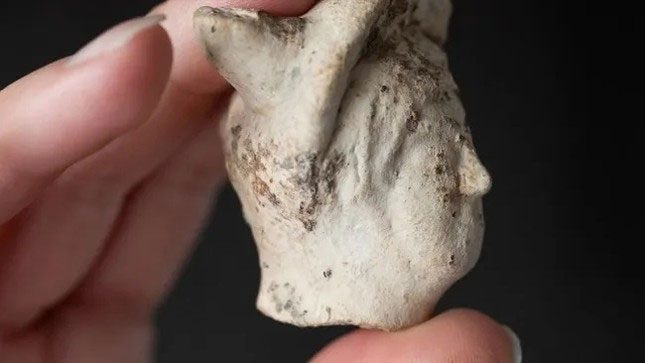Archaeologists in England have unearthed a 2,000-year-old clay statue depicting the Roman god Mercury.
A clay head of the Roman god Mercury, discovered in England, has unveiled the existence of a previously unknown Roman settlement.

The 2,000-year-old statue of Mercury, the god of arts, commerce, and financial success in Rome, was found in Kent. (Photo: © National Trust Images/James Dobson).
The statue was discovered at Smallhythe Place in Kent, a site known for its shipbuilding during the Middle Ages. Thus, the research team was astonished to find the clay head of Mercury, a Roman god associated with the arts, commerce, and financial success, dating back approximately 2,000 years.
According to a statement from the National Trust, a UK conservation charity, the head is considered “extremely rare”, along with other findings from the excavation, indicating that a Roman settlement existed in this area between the 1st and 3rd centuries.
Typically, small statues of Mercury were made from metal; however, the clay version—crafted from a fine white clay that would later be used for making smoking pipes—was an unexpected discovery.
The statement noted that at that time, most clay figurines were cast from local clay sourced from central Gaul (modern-day France) and the Rhine and Moselle regions. Today, archaeologists are aware of fewer than 10 clay figurines from the Roman era in England, the majority of which depict female deities, such as the goddess Venus.
During the Roman period in Britain (43 to 410 AD), both common people and the elite worshipped small statues of gods within their homes, as religion played a significant role in daily life.
This particular statue of Mercury, which shows the deity wearing a cap, may depict him in one of two ways: either draped in a short cloak or nude while holding a caduceus, a staff entwined with serpents that today symbolizes the medical profession.
The head of Mercury, along with other findings from this site, will be displayed on February 28 at Smallhythe Place.


















































